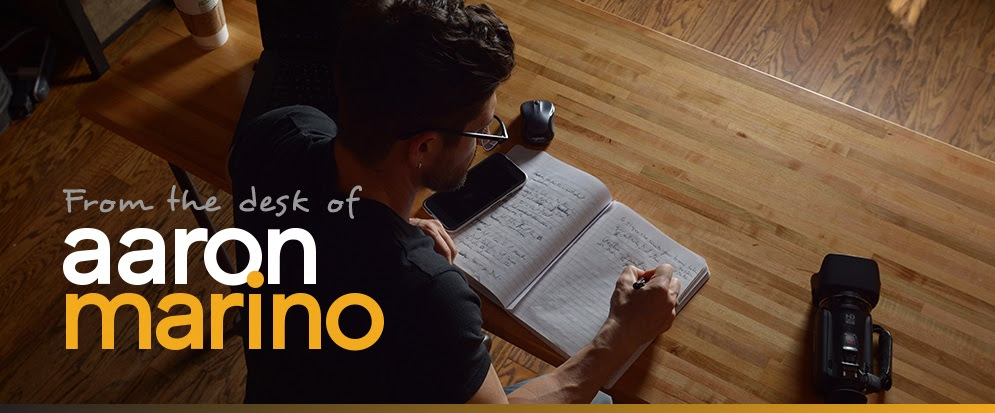
I always receive emails like this: “I simply can’t match. I’m not colorblind or anything, I just can’t. I don’t want to wear jeans and tee shirts all my life. I like color, I like patterns, and I like wearing sexy things, but I feel like I’m just putting together random crap at times.”

These days, screwing up matching and coordinating clothing is pretty tough. Every style coordination rule has been tossed out the window. I see people walking down the street, and I think they must be color-blind. No, they’re not color-blind. The more outlandish a combination of color combo, the more people think it’s all the rage. Regardless, a well-dressed man matches and coordinates his clothing. That said, I want to discuss matching colors, color blindness, and coordinating patterns.
Let’s first talk about matching colors. We’ll start with an easy one: black. Any color you want to combine with black will match and look fantastic. However, an issue may arise if you’re trying to match two blocks together. If you have a black jacket and a black pair of pants that were not bought together or sold as a pair, they may look a bit funny and not match exactly. You want to stay away from that. Pretty much anything else is going to be fair game.

One common misconception is blacks, browns, and tans can never be worn together. Black can be worn with tan, which looks fantastic. Black doesn’t look really good with dark brown, however. It seems awkward and doesn’t feel right, as the contrast is insufficient. You don’t want the colors to be too similar. Dark browns work great with light blues, pinks, and greens.
Light blue is an almost perfect color that matches pretty much anything. It looks terrific with browns and blacks and works with everything. If you wear a light blue shirt with a black jacket, you could pair that combo with light gray pants to look amazing. You could also go darker with slate gray or charcoal gray pants, or you could go with jeans.
To start the discussion about color blindness, check out the chart. If any images match the top left image, you are color-blind. Color-blind people have a tough time with red and green. But I must be honest; many of us struggle with specific colors. If I’m in a store and see navy blue, I sometimes think it’s black. At times I have to hold something black up next to it. Tan and taupe are kind of the same situation for me. If you struggle with a specific color or are color-blind, build a base wardrobe around the essentials. The essentials are black, gray, and white.

Think about it. Pretty much everything matches black, everything matches gray, and everything matches white. These three should be the foundation of your wardrobe. And if Grandma gives you a shirt and you think it’s brown, but it’s really pink with purple, it will match white, gray, or black.
Medium blue is another base color that you could incorporate into your wardrobe. Most people with color blindness can determine and decipher medium blue. Dark blue is not versatile for color matching. Jeans are another example. Stay away from really dark jeans. But in the middle range, you can match any and everything to them.
You can use these tips if you’re color-blind or if you really don’t want to think about matching and coordinating. Build your wardrobe around the basics, including black, gray, white, and medium blue, which are almost matching idiot-proof.

Now, nothing strikes fear in a man’s heart like matching multiple patterns and one outfit. When executed correctly, an outfit is taken to the next level. But if it’s done wrong, you look awkward, and everyone’s eyes hurt. So, the first thing you need to know is that if you’re a pattern-matching novice, limit the number of patterns in an outfit to two. For instance, if you have a solid jacket, you can have a patterned tie and a patterned shirt. If you have a solid tie, you can have a patterned jacket and a patterned shirt. Once you get the hang of this, limit the number of patterns in one outfit (not including your socks) to three.
Next, you need to make sure that your patterns contrast in size. If you have a small pattern on your shirt, you want a more prominent pattern on your tie. If you have a smaller pattern on your shirt, you want a more significant pattern on your tie. You need a super thick or solid tie if you have a wide stripe on your jacket and a medium stripe on your shirt.

The shape or pattern is not as much of a concern. Simply have different size patterns in the outfit. I see a common issue when a guy is wearing a pinstripe shirt with a pinstripe suit, and the patterns are too small and close in size. He can change the pattern sizes to look dynamite.
The next point is that patterns need to contrast in terms of density. Make sure that the patterns on your outfit are of different densities. The best way to explain the concept is like this. New York City has a lot of people living in a small area (aka super dense). Take that same area out in the country, and the number of people is fewer (aka less dense). Your clothing pattern densities need to be different and contrast. So, does this mean that you can wear three different polka dots? Yes, as long as they balance and contrast in size and density. You can wear three stripes as well. Again, they need to balance in size and density.
At the end of the day, color and pattern matching is an issue that tons of people have. Think about it — most likely, when you go shopping, you’re thinking about each individual item you’re buying rather than how it will go with other items. Plus, some trends or combinations are challenging to pull off and need everything to be spot-on, including each item’s fit, proportion, styling, and quality. However, buy and stick to some good quality basics, as I discussed, in black, gray, white, and medium blue. You will make putting together outfits much easier for yourself.












